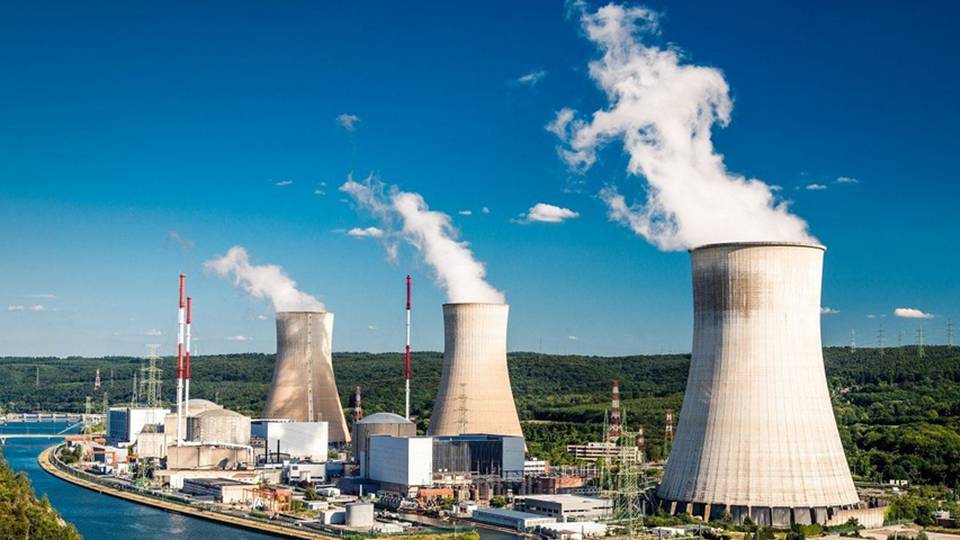The dynamics of the world are changing, which is perennial to development. In the context of ensuring sustainable energy for generations, it’s imperative to shift from green to nuclear energy. However, the West’s hypocrisy doesn’t seem to change even an inch.
The West is fooling everyone with their hypocrisy
The so-called western nations have time and again lectured the world about climate change, irrespective of reflecting on their hypocritical gesture.
However, there is a vast inequality among the contributors to a sustainable future, credit goes to industrialisation. The United States and the European Union alone emit more than 47 per cent of the total harmful gases present in the atmosphere. On the other hand, China’s contribution was 13 per cent. Additionally, since many countries were developing, they could not impose strict control on emissions and adapt to Green Energy.
However, it’s pertinent to note that countries have now started realising that renewable energy is not sustainable in the long run. Thus, they are shifting towards nuclear energy resources in order to fulfil their needs.
Reasons for the shift from renewable to nuclear
Renewable resources can be considered as a type of production that use sources like wind, water, sun, and many more, that will naturally restore themselves. However, renewable sources such as hydro-power, water energy, or wind energy, can only be consistent in their flow until they are available. To simplify it, there will be no solar energy during a cloudy day, or there will be no wind energy in case of a no wind scenario.
Because of the aforementioned context, the countries are now returning to nuclear energy, in order to satisfy their needs and wants. Slowly and gradually, they are setting up nuclear power plants to further boost their economy. In addition, it’s also an improvement over the hovering sword of energy dependencies.
European dependence on nuclear energy
Various European countries depend upon importing their energy needs. To add to it, the bloc imported nearly 60 per cent of its energy in 2019. In the aftermath of the Russia- Ukraine war, it became imperative for the EU to cut down its dependence on Russia for its energy needs.
Currently, most of the EU nations generate nuclear power. France has the most operable nuclear reactors, followed by Belgium and Spain. This new mood of the European members turned France to become Europe’s most pro-nuclear country, by developing sound 70 per cent of its electricity through technology.
Apart from this, Belgium has recently reversed its decision of phasing out nuclear energy by 2025. The country has extended the green signal of two reactors for another decade, with Russia’s invasion of Ukraine. This generated energy will further help Belgium, in avoiding its reliance on Russian gas as it builds out renewable power sources, including wind turbines and solar fields.
On the other hand, there is a considerable increase in building nuclear power capabilities. With Britain, announcing its nuclear power expansion, even Netherlands declared its construction of two additional nuclear reactors in order to support its solar, wind, and water resources for energy.
US’s shift to nuclear energy
With years of apparent wrong perception, the world has finally realised that renewable energy alone cannot keep the lights on forever. Once the propagators of renewable energy have ultimately, the west recognized the necessity of nuclear power in order to reduce the carbon-based fuels in the nation’s energy grid.
Moreover, nuclear power already contributes 20 per cent of the US’ electricity, leading to almost half of the country’s carbon-free energy. Looking at stats, it can be observed that at the end of 2021, the United States had 93 operating commercial nuclear reactors, with a combined generation capacity of about 95,492 MW, at 55 nuclear power plants.
Comparing the US’s nuclear electricity generation from 1977 to 2021, an immense level of surge can be witnessed from 250,883 thousand MW to 778,152 thousand MW, respectively.
To sum it up, it can be said that the supposed superpower is also among the countries that are gradually accepting the importance of turning to nuclear power, rather than relying on the age-old phenomenon of renewable resources.
India turning nuclear powered
India is the third largest consumer of energy after China and the United States. Currently, India operates 22 reactors with a total capacity of 6780 MW in operation. In 2021, the government stated in the Parliament that nuclear power generation capacity would increase to 22,480 MWe (megawatts electric) by 2031.
While India has seen a significant rise in solar and wind power generation over the last few years. However, nuclear power is turning out to be a sustainable option for India’s power needs. Though the share of nuclear-powered electricity in India was stagnated in the last two decades, however, there are increased efforts being laid down to boost the alternative energy.
India is gradually driving itself towards the building of new and advanced nuclear power projects. As reported by TFI, the Modi government has doubled the generation of nuclear energy in past some years and for it, various major projects are being initiated.
To conclude, the phenomenon of generating nuclear-based energy is getting widespread acceptance worldwide. It is to cut short the overwhelming dependence on non-sustainable resources and turn the world from green energy to nuclear energy.
Support TFI:
Support us to strengthen the ‘Right’ ideology of cultural nationalism by purchasing the best quality garments from TFI-STORE.COM
